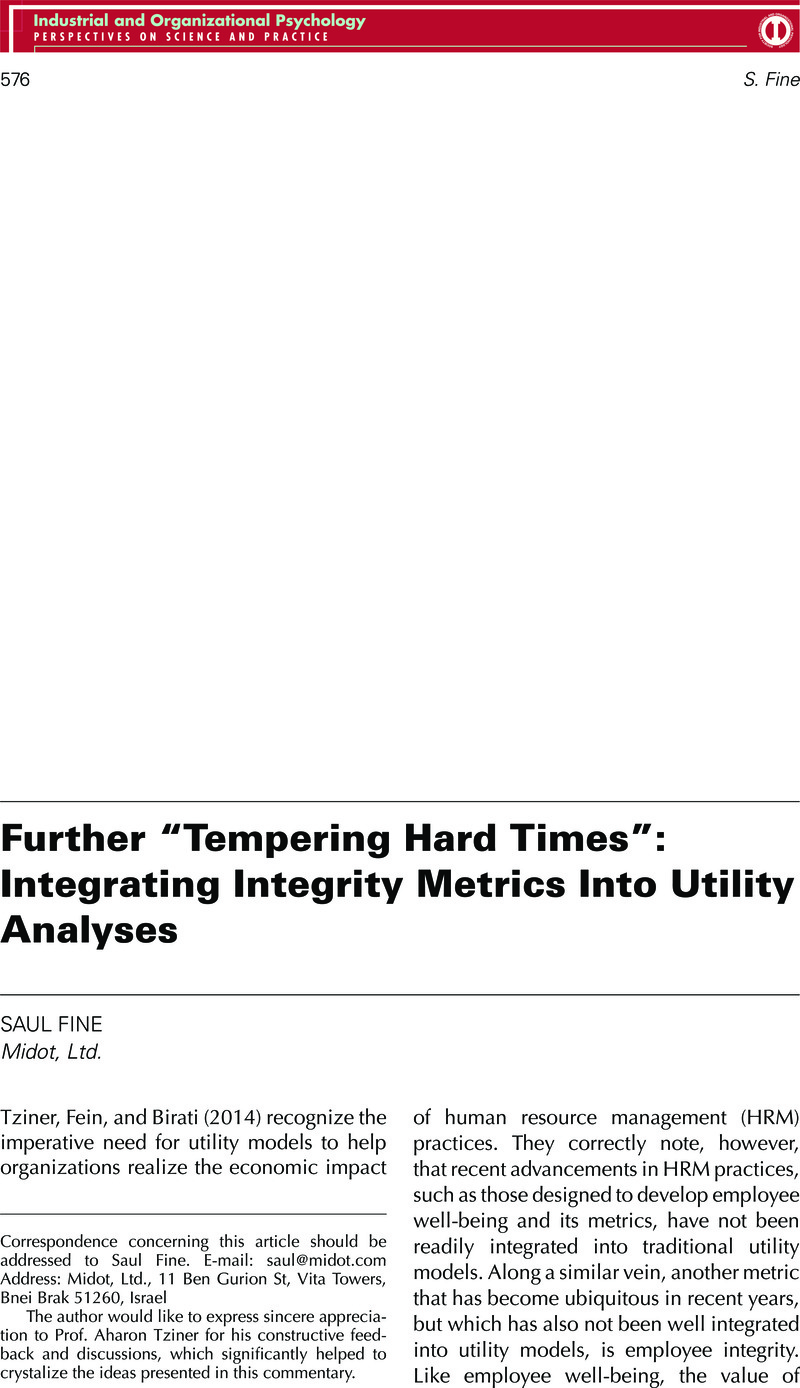No CrossRef data available.
Article contents
Further “Tempering Hard Times”: Integrating Integrity Metrics Into Utility Analyses
Published online by Cambridge University Press: 10 April 2015
Abstract
An abstract is not available for this content so a preview has been provided. Please use the Get access link above for information on how to access this content.

Information
- Type
- Commentaries
- Information
- Copyright
- Copyright © Society for Industrial and Organizational Psychology 2014
References
Center for Retail Research (2010). The global retail theft barometer 2010. Nottingham, England: Author.Google Scholar
Fine, S. (2010). Pre-employment integrity testing across multiple job industries. Psychological Reports, 107(2), 1–4.CrossRefGoogle ScholarPubMed
Fine, S. (2012). Estimating the economic impact of personnel selection tools on counterproductive work behaviors. Economics and Business Letters, 1(4), 1–9.Google Scholar
Israel Central Bureau of Statistics. (2009). Average wages per employee job of Israeli workers, July-September 2009. Retrieved from http://www.cbs.gov.ilGoogle Scholar
Karren, R. J., & Zacharias, L. (2007). Integrity tests: Critical issues. Human Resource Management Review, 17, 221–234.Google Scholar
Kouzes, J. M., & Posner, B. Z. (2009). To lead, create a shared vision. Harvard Business Review, 87, 20–21.Google Scholar
Latham, G. P., & Whyte, G. (1994). The futility of utility analysis. Personnel Psychology, 47, 31–46.Google Scholar
O'Boyle, E., & Aguinis, H. (2012). The best and the rest: Revisiting the norm of normality of individual performance. Personnel Psychology, 65, 79–119.Google Scholar
Sackett, P. R., & Devore, C. J. (2001). Counterproductive behaviors at work. In Anderson, N., Ones, D. S., Sinangil, H. K., & Viswesvaran, C. (Eds.), Handbook of industrial, work, and organizational psychology (Vol. 1, pp. 145–164). Thousand Oaks, CA: Sage.Google Scholar
Schmidt, F. L., & Hunter, J. E. (1983). Individual differences in productivity: An empirical test of estimates derived from studies of selection procedure utility. Journal of Applied Psychology, 68(3), 407–415.CrossRefGoogle Scholar
Schmidt, F. L., Hunter, J. E., McKenzie, R. C., & Muldrow, T. W. (1979). Impact of valid selection procedures on work-force productivity. Journal of Applied Psychology, 64(6), 609–626.Google Scholar
Tziner, A., & Birati, A. (2002). Assessing the financial value of worker organizational behaviors and human resource management programs and interventions. In Tziner, A. (Ed.), Human resource management and organization behavior (pp. 321–367). Aldershot, England: Ashgate.Google Scholar
Tziner, A., Fein, E. C., & Birati, A. (2014). Tempering hard times: Integrating well-being metrics into utility analysis. Industrial and Organizational Psychology: Perspectives on Science and Practice, 7(4), 554–568.Google Scholar

